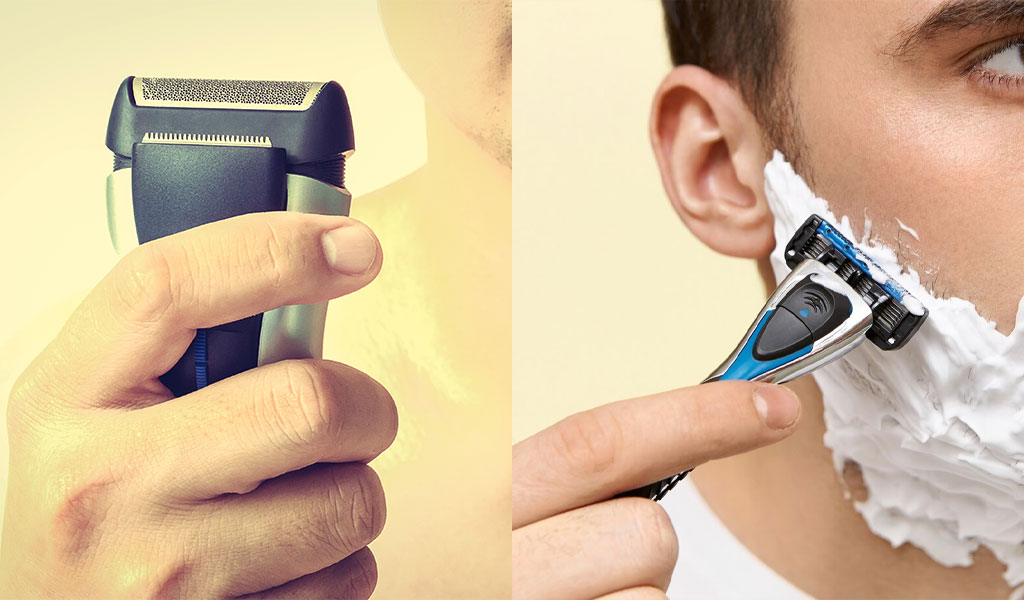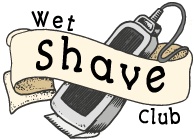When it comes to shaving, the debate between electric and traditional methods has been ongoing. Which one should you choose for the best shaving experience?
The answer largely depends on personal preference and specific needs. Both electric and traditional razors offer unique benefits and drawbacks.
Electric shavers are known for their convenience and speed, making them ideal for quick touch-ups or busy mornings.
On the other hand, traditional razors provide a closer shave and are often preferred by those with sensitive skin or who enjoy the ritual of a traditional wet shave.
In this blog post, we will explore the pros and cons of each method, helping you decide which type of shaving suits you best.
Whether you prioritize efficiency or a luxurious shaving experience, understanding the differences will guide you toward making the right choice for your grooming routine.
An Overview of Electric Shaving
Electric shaving has become a popular choice for many individuals seeking a convenient and efficient way to groom themselves.
This method involves using an electric razor powered by a motorized mechanism to trim hair, providing a viable alternative to traditional wet shaving with manual razors.
Key features and benefits of electric shaving include:
- Convenience: Electric shavers are quick and easy to use, requiring minimal preparation. They can be used dry, eliminating the need for shaving cream or gel, which can save time and reduce mess.
- Time-Saving: Electric shaving is often faster than traditional methods, making it ideal for busy individuals or those who need to shave on the go.
- Reduced Irritation: Many electric razors are designed to minimize skin irritation and razor burn compared to manual razors. This is particularly beneficial for individuals with sensitive skin.
- Versatility: Electric shavers come in various types, including foil and rotary shavers, catering to different preferences and hair types.
- Portability: Some electric shavers are designed for travel, offering compact and rechargeable options that are easy to carry and use while on the move.
Electric shaving offers a practical and efficient way to achieve a groomed appearance with minimal fuss. The choice between electric and traditional shaving ultimately depends on individual preferences, lifestyle, and skin type.
Experimenting with different electric shavers and techniques can help determine whether electric shaving is the right choice for you.
An Overview of Traditional Shaving
Traditional shaving, often referred to as wet shaving, is a time-honored grooming ritual that involves using a manual razor along with shaving cream or soap to achieve a clean and smooth shave.
This method, although more labor-intensive compared to electric shaving, offers several unique benefits and a luxurious shaving experience.
Here’s a detailed overview of traditional shaving:
- Close Shave: One of the primary advantages of traditional shaving is the ability to achieve an exceptionally close shave. Manual razors can glide closely along the skin, resulting in smooth and hair-free surfaces.
- Exfoliation: The process of traditional shaving involves applying shaving cream or soap, which helps to soften the hair and exfoliate the skin. This can leave the skin feeling refreshed and rejuvenated after shaving.
- Customization: Traditional shaving allows for customization with different types of razors (such as safety razors or straight razors) and shaving products (creams, soaps, brushes) tailored to individual preferences and skin types.
- Less Irritation: When done correctly, traditional shaving can lead to less skin irritation and razor burn compared to some electric razors. The use of quality shaving products and proper technique can contribute to a smoother and more comfortable shave.
- Ritual and Relaxation: Many people appreciate the ritualistic aspect of traditional shaving, which can be a relaxing and meditative experience. It provides a moment of self-care and mindfulness in the daily routine.
Traditional shaving offers a classic and indulgent approach to grooming, providing a close shave and a therapeutic experience for those who appreciate the ritual.
It’s a method that rewards patience, skill, and attention to detail, making it a preferred choice for many individuals seeking a traditional and effective way to achieve a smooth shave.
Electric vs Traditional Shaving: At a Glance

Choosing between electric and traditional shaving methods can be a personal preference influenced by various factors. Both approaches have distinct advantages and considerations.
Let’s compare them side by side to help you make an informed decision:
| Aspect | Electric Shaving | Traditional Shaving |
| Convenience | Convenient and quick, can be used without water | Requires water and shaving cream, more time-consuming |
| Close Shave | Generally provides a close shave | Offers an exceptionally close shave |
| Skin Irritation | Less likely to cause irritation, suitable for sensitive skin | Can cause less irritation with proper technique |
| Initial Cost | Higher upfront cost for the razor | Lower initial cost, but ongoing costs for blades and cream |
| Long-Term Cost | Lower long-term cost (no need for replacement blades) | Higher long-term cost due to ongoing purchase of blades and cream |
| Learning Curve | Easy to use, minimal learning curve | Requires practice and technique to master |
| Portability | Portable and suitable for travel | Requires shaving cream and may be less portable |
| Environmental Impact | Electric razors can be more sustainable with rechargeable options | Traditional razors can produce less waste if using safety razors with recyclable blades |
When deciding between electric and traditional shaving, consider your lifestyle, skin sensitivity, desired shaving experience, and budget. Both methods have their merits, so choosing the right one for you depends on your individual needs and preferences.
Electric vs Traditional Shaving: Side-by-side Comparison

Shaving is a fundamental aspect of personal grooming, and choosing the right method can greatly impact your shaving experience. Two primary methods for shaving are electric and traditional (or wet) shaving.
Each method has its own set of advantages and considerations, catering to different preferences and needs. Let’s delve deeper into the comparison between electric and traditional shaving, exploring key aspects that can help you decide which approach is best suited for you.
Shaving Experience
Electric shavers are designed for convenience and efficiency. They use oscillating or rotating blades to cut hair without the need for shaving cream or gel.
The experience is typically quick and suitable for individuals with busy lifestyles. Electric shavers are also versatile, offering options for dry shaving or wet shaving with water or shaving foam.
Traditional shaving involves using manual razors (such as safety razors or straight razors) along with shaving cream or soap. This method offers a more tactile and immersive experience.
Many enthusiasts appreciate the ritualistic nature of traditional shaving, which can be relaxing and therapeutic.
Close Shave Quality
Electric shavers can provide a reasonably close shave, especially modern foil or rotary shavers. However, they may not match the closeness achieved by traditional razors, particularly for individuals with coarse or thick hair.
Traditional razors, when used correctly, can deliver an exceptionally close shave. The combination of sharp blades and proper shaving techniques can result in smooth, stubble-free skin.
Skin Irritation and Sensitivity
Electric shavers are generally considered to be gentler on the skin, making them suitable for individuals with sensitive skin or prone to razor burn.
The blades in electric shavers typically do not come into direct contact with the skin, reducing the risk of cuts and irritation.
While traditional shaving can provide a closer shave, improper technique or dull blades can lead to skin irritation, razor burn, or cuts.
However, many proponents of traditional shaving argue that with proper preparation and technique, irritation can be minimized.
Cost Considerations
The initial cost of purchasing an electric razor can be higher compared to traditional razors. However, electric shavers require minimal ongoing costs for replacement blades and shaving products, making them cost-effective in the long run.
Traditional shaving typically has a lower initial cost, especially if using a safety razor with replaceable blades. However, ongoing costs for replacement blades, shaving cream, and aftershave products can add up over time.
Learning Curve and Skill
Electric shavers are generally easy to use, requiring minimal skill or technique. They are suitable for beginners and those looking for a straightforward shaving routine.
Traditional shaving has a steeper learning curve and requires practice to master. Proper technique, such as maintaining the correct shaving angle and using adequate pressure, is essential to achieve optimal results without irritation or cuts.
Environmental Impact
Modern electric shavers can be more environmentally friendly, especially rechargeable models that eliminate the need for disposable batteries. They also produce less waste compared to traditional razors that require disposable blades.
Traditional shaving can be environmentally conscious if using safety razors with recyclable metal blades. However, the use of disposable plastic razors or cartridges can contribute to plastic waste.
Portability and Convenience
Electric shavers are portable and convenient for travel. They are usually compact and do not require additional shaving accessories like shaving cream or water, making them ideal for on-the-go grooming.
Traditional shaving requires access to water and shaving cream, which may not be as convenient for travel. However, many enthusiasts prefer to maintain their traditional shaving routine even when away from home.
Both electric and traditional shaving methods have their own unique advantages and considerations. The choice between the two ultimately depends on individual preferences, skin sensitivity, desired shaving experience, and lifestyle.
Electric shaving offers convenience, speed, and minimal maintenance, making it suitable for busy individuals or those with sensitive skin.
On the other hand, traditional shaving provides a luxurious and customizable experience, allowing for an exceptionally close shave with proper technique.
Wrapping Up
In the debate between electric and traditional shaving, the choice ultimately boils down to personal preference and individual needs. Electric shaving offers convenience and efficiency, making it ideal for those with busy lifestyles or sensitive skin.
On the other hand, traditional shaving provides a more immersive and ritualistic experience, delivering an exceptionally close shave with the right technique.
Consider your priorities, whether it’s convenience, skin sensitivity, or the desire for a traditional grooming ritual, when making your decision.
Both methods have their merits and considerations. Experimenting with different approaches can help you discover which method aligns best with your grooming routine and preferences.
Whether you opt for the quick convenience of electric shaving or the classic artistry of traditional shaving, the goal remains the same: achieving a smooth and comfortable shave that suits your unique lifestyle and needs.

